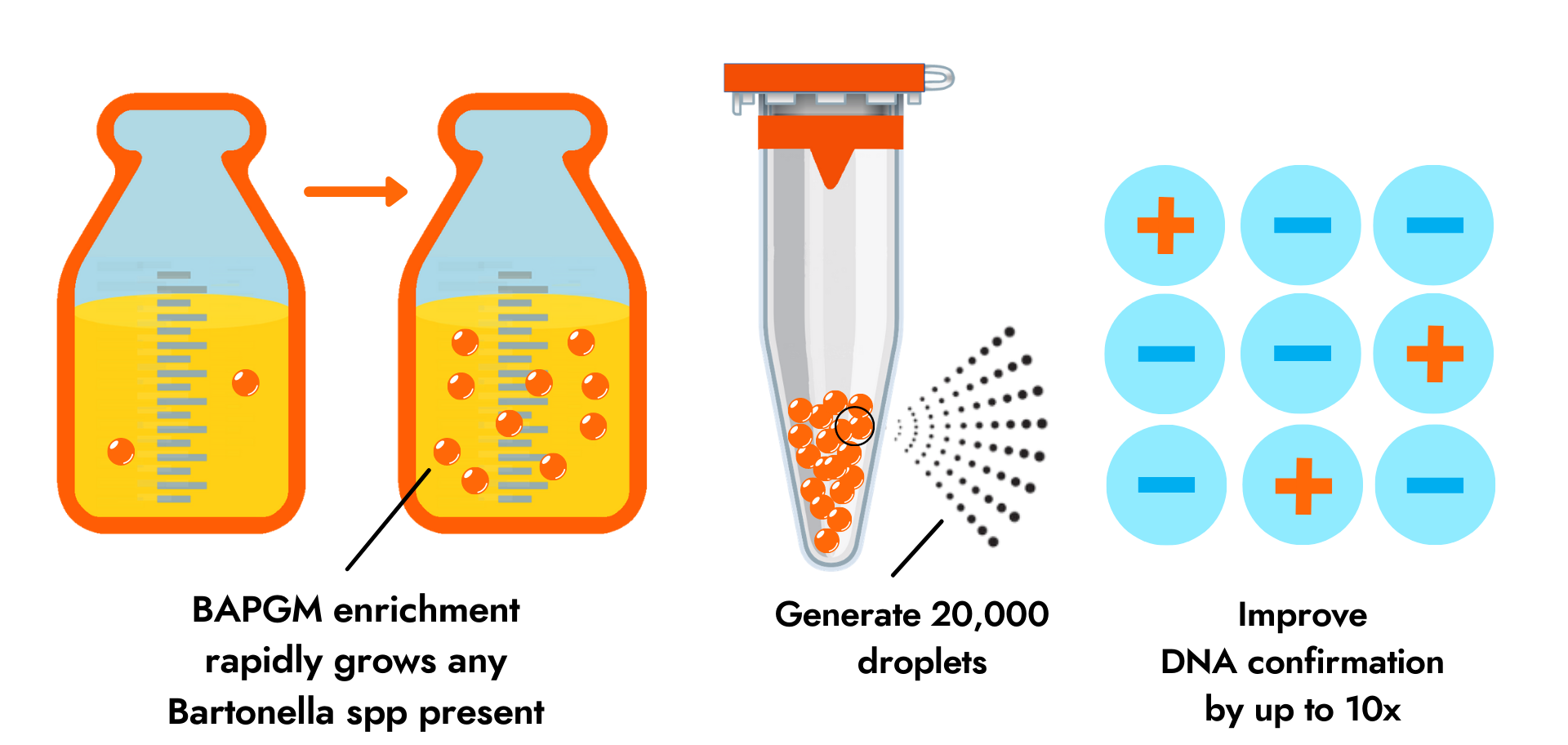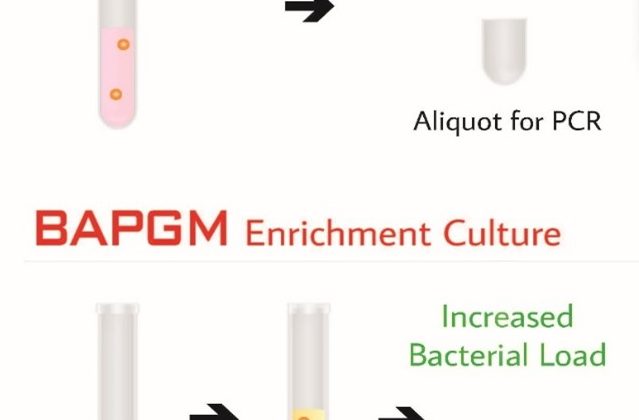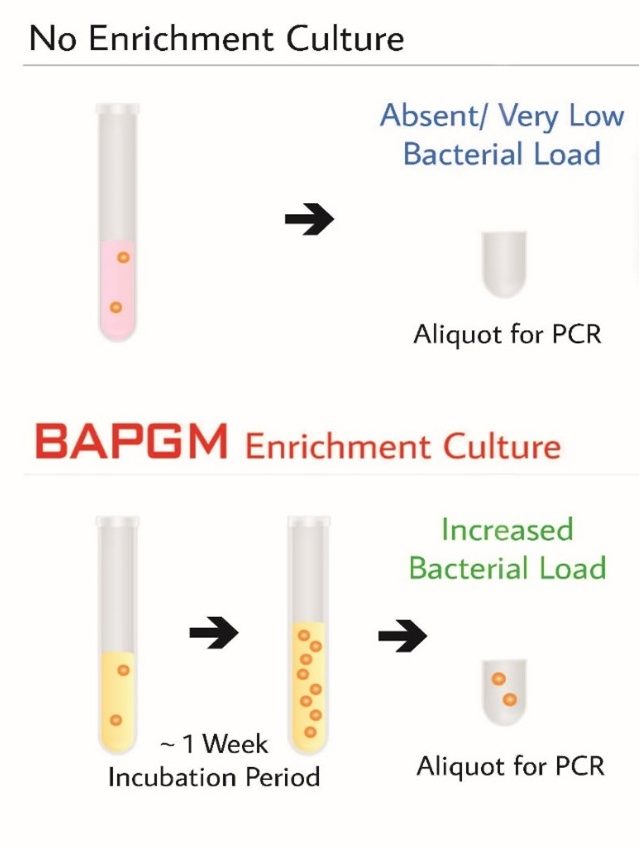This year Galaxy Diagnostics released Bartonella Digital ePCR™, which combines ddPCR technology with BAPGM™ enrichment to enhance direct detection of infection. Although replacing qPCR with ddPCR has increased the sensitivity of our ePCR™ platform, collecting samples on three different days (known as Triple Draw) is still the recommended approach for confirming a bartonellosis diagnosis.
Research shows that the Bartonella bacteria that make people sick can cause a cyclical bacteremia. That means that sometimes the bacteria are in the blood and sometimes they are not. Bartonella species infect multiple cell types, which allows for them to evade the host immune response as well as avoid detection using standard direct testing methodologies.
Bartonella Digital ePCR™ Triple Draw is unique to Galaxy Diagnostics and offers the most sensitive approach for confirming Bartonella species infection. The Triple Draw involves collection of blood samples on three different days over a 5 to 7-day period to match the cyclical behavior of Bartonella. Laboratory studies and clinical research involving veterinary workers suggest that the sensitivity of ePCR™ is about doubled when the Triple Draw method is used.
But this is just one aspect of the advanced methods Galaxy Diagnostics employs. What steps are involved once the samples are received?
Culturing with BAPGM™
Culturing is a common method that clinical diagnostic companies and researchers use to grow microorganisms under controlled laboratory conditions. Clinical samples such as blood are added to a liquid or gel-like growth medium to grow bacteria of interest to a detectable level.
The formulation of the growth medium varies depends on the bacteria being targeted. A variety of growth media are commonly used in clinical laboratories. For example, a lab may use a growth medium called Luria broth to look for multiple bacteria species that do not have specialized growth requirements.
Galaxy Diagnostics uses Bartonella alphaproteobacteria growth medium, or BAPGM™, a patented growth medium that selectively grows Bartonella species. It was developed at North Carolina State University by Dr. Ed Breitschwerdt and Dr. Ricardo Maggi, who are respectively the chief scientific officer and chief technology officer of Galaxy Diagnostics.
Since Bartonella species can survive in arthropods such as ticks, the medium formulation was modified to mimic arthropod growth requirements more closely. By matching the environment where the bacteria could normally be found, there is a higher chance of successfully growing the infectious bacteria in the lab. Galaxy Diagnostics scientists have published findings related to the analytical utility of pre-enrichment BAPGM™ in peer-reviewed journals. A selected list of these publications can be found here.
When whole blood samples for Bartonella species testing are received, a BAPGM™ culture is prepared for each one. The cultures are incubated for about a week, during which environmental parameters are strictly monitored and adjusted as needed. Since Bartonella species require 22-24 hours to replicate, it can take a week for substantial growth to occur. By comparison, this is more than 20 times slower than the replication rate of Streptoccocus pygones, the bacteria responsible for strep throat.
Pre- and Post-Enrichment ddPCR
Droplet digital PCR, or ddPCR, is a modified version of PCR utilized for low-abundance targets that may be missed using conventional technology. By partitioning the test sample into approximately 20,000 droplets and performing a reaction in each one, the negative effects of inhibitors are greatly reduced.
Galaxy uses ddPCR to detect a broad range of Bartonella species DNA in each pre- and post-enrichment sample. Bartonella species grow slowly and infections at all stages often yield very low levels of DNA, so using ddPCR after enrichment reduces the likelihood of false negative results. This “enrichment” of the sample is where the “e” in ePCR™ comes from.
With the Triple Draw method, this means that there are many opportunities to detect Bartonella DNA if it is present because 6 total ddPCRs are being run: one on each of the original blood samples, and one on each of the blood samples enriched in BAPGM™.
Additional Testing
We recommend combining the Bartonella Digital ePCR™ Triple Draw with the Bartonella IFA Serology Panel, IgG to maximize diagnostic data available to the healthcare provider. This comprehensive panel will also screen for antibodies to the species that most commonly cause human disease, including B. henselae, B. quintana, B. vinsonii berkhoffii, and B. koehlerae. This is important because research suggests that chronically infected patients may not test positive for Bartonella DNA, but have high antibody titers, and vice versa.
More information about flea and tick-borne pathogens and the tests we offer can be found here.



